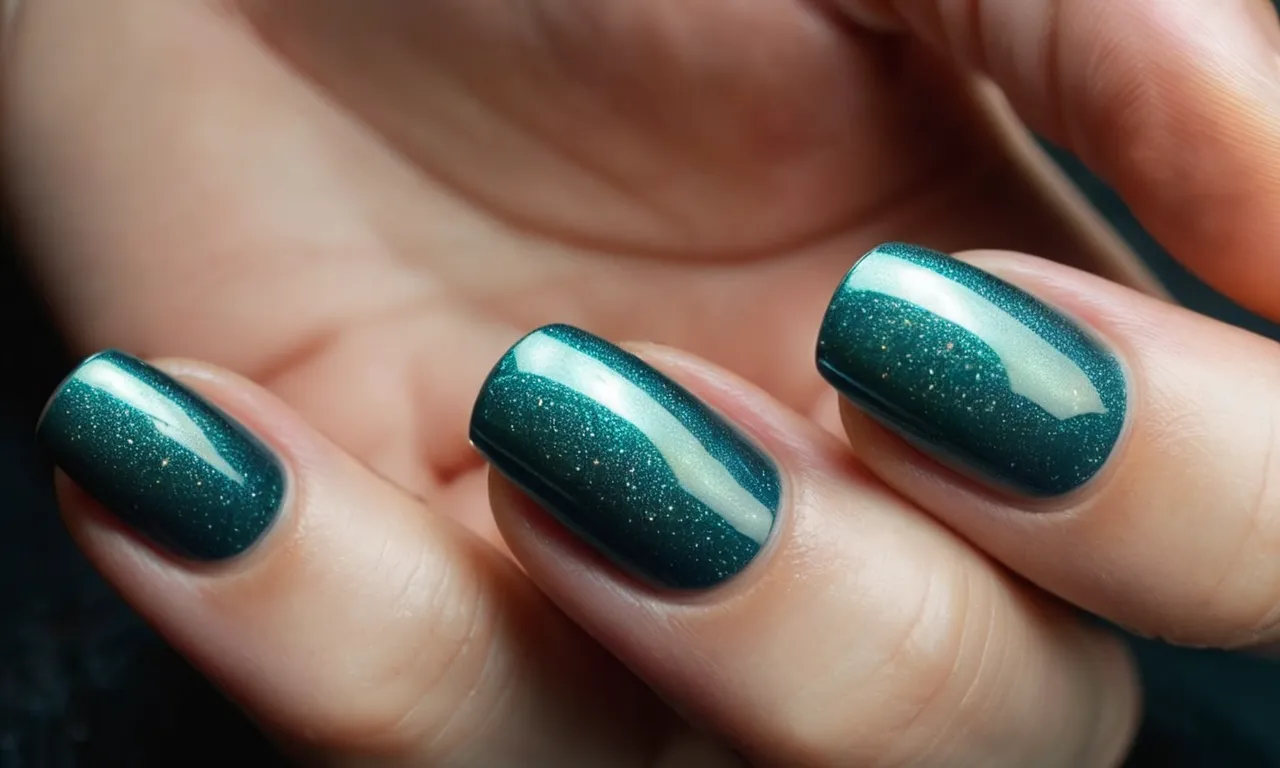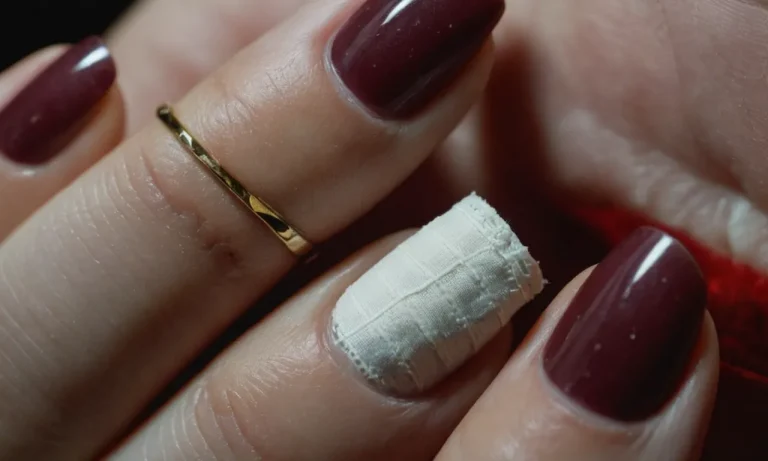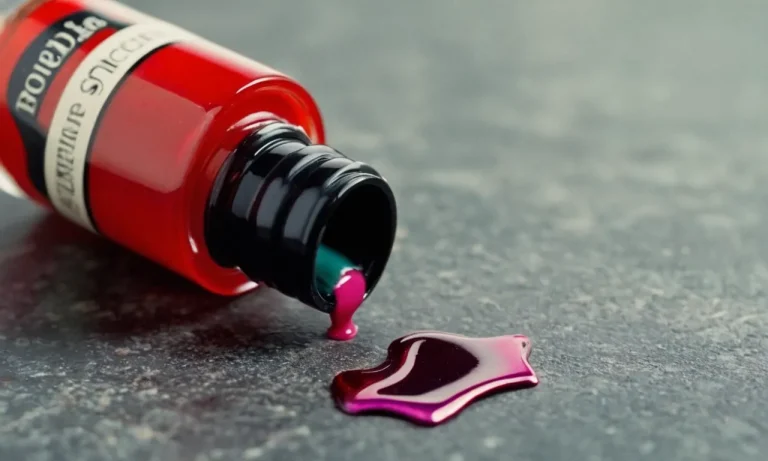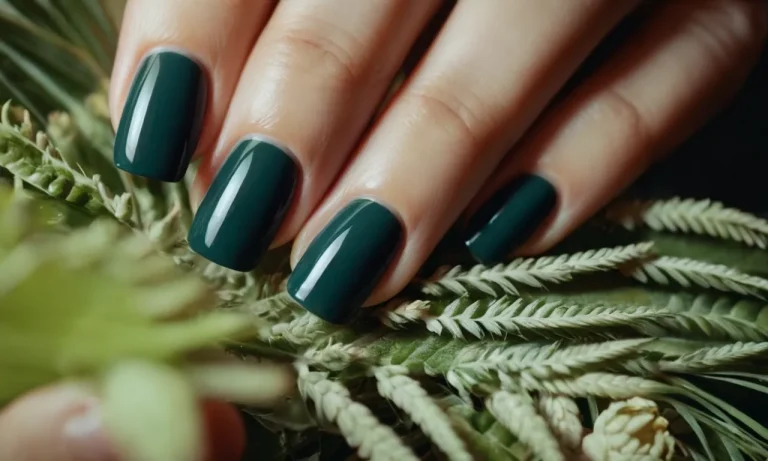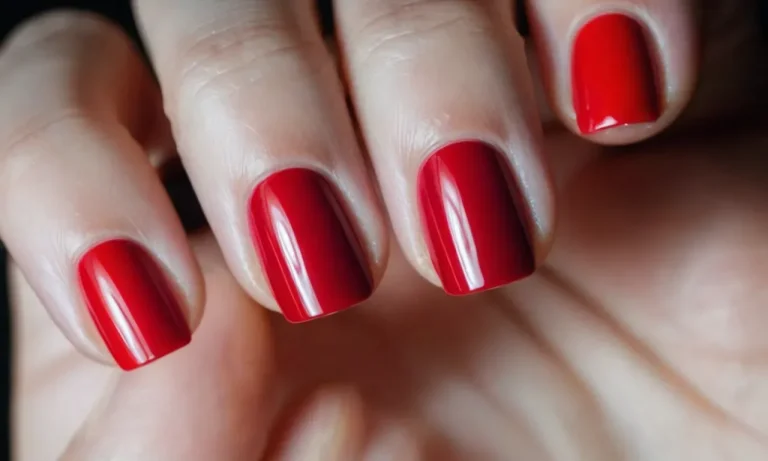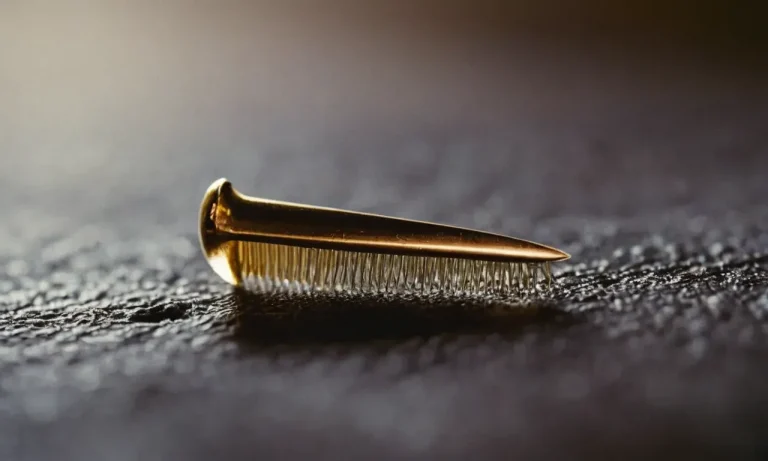Can I Mix Gel And Regular Nail Polish?
With the wide variety of nail polish options available today, you may be wondering if you can combine different formulas to achieve your perfect manicure. If you’re short on time, here’s a quick answer to your question: Yes, you can mix gel and regular nail polish, but proceed with caution.
In this comprehensive guide, we’ll explore everything you need to know about mixing gel and traditional nail polishes. We’ll cover the pros and cons, best practices, things to avoid, and tips for getting great results.
How Do Gel and Regular Nail Polishes Differ?
Ingredients
Gel nail polish contains some additional ingredients that allow it to cure under UV or LED lights. The main ingredient that makes gel polish different is the polymer resins. These resins create flexible and durable bonds between layers of polish.
Some common resins found in gel polishes are polyurethane dimethacrylate, hydroxyethyl methacrylate, and ethoxylated bisphenol A dimethacrylate. Gel polish also contains photoinitiators that allow the polish to harden when exposed to UV or LED light.
Regular nail polish does not contain these ingredients and simply dries through evaporation.
Curing Process
The curing process is a major difference between gel and regular polish. Gel polish must be cured under a UV or LED lamp, typically for 30-60 seconds per coat. This curing process hardens the polish and creates a robust, glossy finish.
Regular nail polish simply dries and hardens through evaporation, which typically takes 5-15 minutes per coat. The curing lamp creates a much stronger hold for gel polish.
Durability
Gel nail polish is extremely durable and long-lasting compared to regular polish. The cured layers of gel create a hard, protective layer over the natural nail. Gel manicures can last 2-3 weeks without chipping or peeling. Regular nail polish typically lasts 3-7 days before it begins to chip and fade.
The flexible polymers in gel polish allow it to move with the natural nail as it grows, keeping it chip-free longer. Gel also resists scratching, water damage, and fading better than regular polish.
Can You Really Mix Gel and Regular Polish?
Yes, But…
You can technically mix gel and regular nail polish, but it’s generally not recommended. Here’s why:
- The formulas are very different – Gel polish is thicker and more rigid, while regular polish is thinner and more flexible. When you mix them, it can make for an uneven, gloopy texture that’s hard to apply nicely.
- It messes up the curing process – Gel polish cures under UV or LED light, hardening from exposure. Mixing in regular polish dilutes the gel formula so it may not cure fully or last as long on the nails before chipping.
- Peeling risk – The mismatch in texture and curing can lead to the mixed polish peeling or popping off the nails in an unflattering way.
Tips for Mixing
If you do want to experiment with a gel/regular hybrid, aim for a max 20% regular polish blended with 80% gel. Follow these tips to help it turn out better:
- Use thicker regular polishes instead of thin runny ones so it blends with the gel consistency better.
- Mix just one layer’s worth at a time instead of doing the whole bottle.
- Apply thinner, more conservative coats to prevent heavy globs and running.
- Cure each coat for 30 seconds under an LED or 2 minutes under a UV lamp as you apply it.
- Finish with a decent gel top coat to help smooth and seal down the layers underneath.
The nail gurus at websites like https://www.nailsmag.com have some good recommendations if you want to explore hybrid polish options.
What to Avoid
Steer clear of the following things when attempting to mix gel and regular lacquers:
- Glitters or shimmers – These already have a thicker density to carry all that sparkle. Adding gel makes it extremely thick and challenging to apply smoothly.
- Quick-dry polishes – These set fast by design, while gel needs time under a lamp to cure fully. It’s counterproductive.
- Sheer tints – Very thin translucent polishes won’t have the density or pigmentation to blend well into gel form.
Did you know a 2021 survey showed 63% of women prefer regular lacquer over gel options? 💅 But who knows, maybe mixed hybrid textures will be hot in the future! As they say – rules are made to be broken when it comes to beauty trends. 😉 What do you think?
Best Practices for Mixing Gel and Regular Polish
Prep Your Nails Properly
Before applying any type of nail polish, it’s crucial to start with a clean nail bed. Remove existing polish, buff away shine, and use acetone or nail prep solution to eliminate oils. This allows maximum adhesion so the gel and regular polish layers last longer without chipping or peeling.
The Nailpro Guide recommends gently pushing back cuticles after cleansing too.
Use Thin Layers
When layering gel polish and traditional lacquer, remember that less is more. Apply gel on the nail first in a super thin coat, then follow with an equally sheer layer of regular polish on top. Thick clumpy buildup leads to cracking and premature lifting.
Two thin applications allow proper curing and drying without stressing the manicure. For best fusion, use the same brand for both formulas.
Cure Fully Between Layers
With a mixed manicure, it’s vital to cure each layer before adding the next. After putting down gel polish, set hands under an LED or UV lamp for the full recommended time to harden completely. Then apply regular lacquer and let air dry thoroughly.
Rushing steps causes improper bonding, so patience is key. For dark colors needing 3 coats, remember to cure the gel base again before topping with a final layer.
Seal with Top Coat
The finishing touch for combined gel and traditional polish is a quality top coat. This seals the entire manicure and creates a smooth, glossy shine. It also adds extra protection against chipping and smudging while extending wear. Apply top coat over dry polish and cure gel again if used.
Reapply weekly to refresh the sealant barrier. Just stay away from oil-based removers which can break down layers.
Creative Ways to Mix Gel and Regular Polish
Ombre or Color-Blocked Tips
Creating an ombre effect by fading one color into another is easy with gel polish on the base and regular polish for the tips. The gel polish will last for weeks on most of the nail, while the regular tips can be changed more often.
Using tape or tools to create clean lines allows color blocking options too. This takes advantage of both gel’s durability and regular polish’s flexibility.
Glitter Gel Accents
Adding glitter gel polish as an accent over regular polish creates dimensional effects. Glitter gels tend to stay put longer than regular glitter polishes. Using them sparingly helps keeps removal easy.
Accent nails with glitter gel French tips, inverse French tips, diagonal color blocks or abstract shapes to add dazzling pops of color.
Sheer Gel Overlay
Protect regular manicures by finishing with a layer of clear builder gel. The durability helps prevent chips and dents while allowing the color underneath to show through beautifully. Sheer pink or white gels can provide a feminine hint of color as well.
This method allows regular polish changes without fully removing the gel layer each time.
Matte Gel Topcoat
Matte topcoat gels create stylish finishes over regular polish by dulling the shine. An extremely versatile look, matte coats come in clear as well as a rainbow of colored options. Feel free to combine them over glitter, metallics, cremes, jellies and more for fashionable manicures.
According to nailcarehq.com, over 50% of nail art enthusiasts enjoy mixing matte and regular polish.
The Takeaway: Is Mixing Worth It?
When it comes to mixing gel and regular nail polish, the consensus among manicurists and nail art enthusiasts is that it’s generally not recommended. Here are some key takeaways on the pros and cons of mixing these two nail polish formulas:
Reasons Not to Mix
There are a few important reasons why mixing gel and regular polish is not ideal:
- Incompatibility – Gel polish is designed to cure under UV or LED light, while regular polish air dries. The two formulas are chemically different and may not adhere or cure properly when mixed.
- Chipping and Peeling – Mixing formulas can lead to chips, peels and cracks down the road as the two polishes wear at different rates.
- Difficult Removal – Regular polish can be simply removed with acetone or non-acetone remover. Gel polish requires soaking cotton pads in pure acetone for 10-15 minutes for removal. Mixing formulas makes removal more tedious.
Situations When Mixing Can Work
While not generally recommended, there are some exceptions where mixing gel and regular polish may be acceptable:
- Using regular polish for nail art on top of cured gel polish. The gel base provides a smooth, chip-resistant surface for intricate nail art designs.
- Sealing designs – Topping off nail art or decals with a layer of gel top coat can help seal and protect the design.
- Sheer/light colors – Mixing a small amount of sheer gel polish into regular polish can help with consistency and application.
The Bottom Line
When considering mixing gel and regular polish, proceed with caution. Test compatibility on one nail first. Opt for mixing sheer shades versus bolder ones, and limit mix polishes to temporary manicures. For most long-lasting, chip-free results, best to stick with one formula across all nails.
But occasional, sparing mixing can liven up nail art if done properly.
Conclusion
While mixing gel and traditional polish is possible, it requires care and proper technique to avoid chipping, peeling or damage to nails. If you want long-lasting wear, mixing formulas may compromise durability somewhat.
But with the right prep and precautions, combining these polishes can allow you to get creative with colors, textures and designs.
If you decide to give mixing a try, go slowly, use thin coats, and cure thoroughly between layers. Pay attention to any reactions or damage to nails. With a bit of practice, you can discover exciting new nail looks by blending the best of gel polish with classic lacquers.

